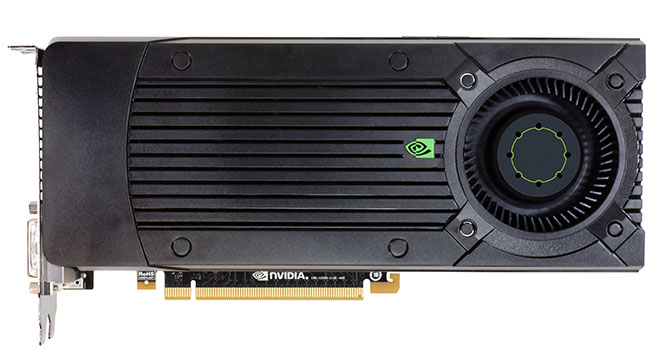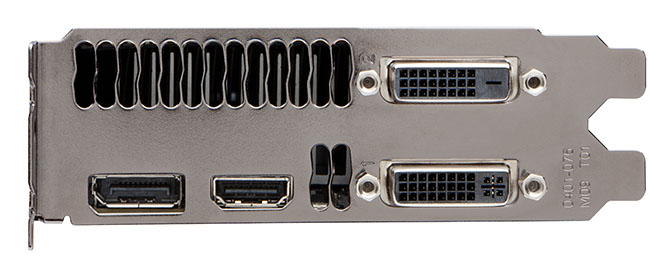The reference card
As supplied by NVIDIA, the reference card is identical to the GeForce GTX 660. This comes as absolutely no surprise when digesting the technical information on the first page.
Though an NVIDIA product first and foremost, there is good reason to still take a brief look at the card, as many AICs will run with this design for their stock-clocked offerings, because the cheapest, fastest option for partners is to buy this card in bulk, add a few company-specific stickers, and release to distributors and retailers.
24cm long and using an off-set axial fan that blows back across the fully-enclosed cooler and out of the rear, the card's look and feel is reminiscent of the GeForce GTX 670 and GTX 680 GPUs.
A single 6-pin power connector (on the far side) sources juice from the PSU and, playing it safe, NVIDIA quotes the same 140W typical (maximum) board power as the full-fat GTX 660.
NVIDIA's 6-series GPUs are excellent with respect to video outputs. Two dual-link DVI (DVI-I and DVI-D) can be concurrently used alongside HDMI (middle) and DisplayPort (left). NVIDIA has become rather quiet on advancing the merits of 3D gaming, which is probably a step too far for this level of card, but there's no reason why you cannot, easily and cheaply, run three or four monitors straight out of the box, though they'll be more for productivity than gaming.
The PCB itself is smaller than the overall card by a significant margin, by 7cm, so AICs with genuine cooling know-how will be able to make shorter cards without too many problems, we imagine. It would make sense for a GTX 650 Ti Boost to be no longer than 17cm, or the width of the actual PCB and, coincidentally, a mini-ITX board, thus paving the way for small-form-factor builds with solid graphics oomph.
A single SLI connector is significant on this model, allowing for a second card to be added for SLI. With two cards coming in at below the price of a single GTX 670 and dual-GPU drivers improving over time, purchasing a single GTX 650 Ti Boost now and potentially adding a second at a later date is a good upgrade strategy for those pressed of funds.
And the 2GB framebuffer for this card is sure to be used by AICs when promoting Ti Boosts. We're not convinced a sub-£150 card really needs such on-board memory, and we'd welcome the £20 cheaper 1GB variant if it keeps to the same internal architecture.













